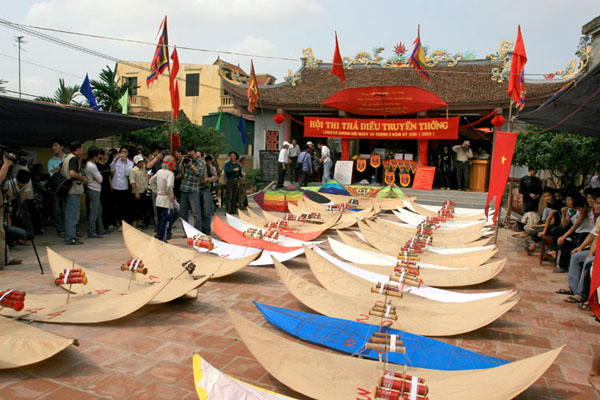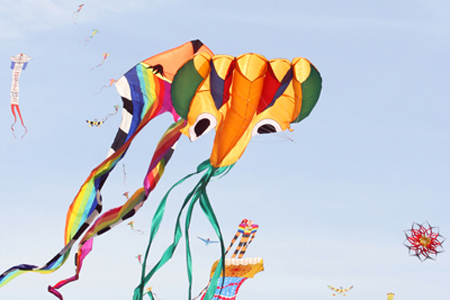There are many kinds of kites: the largest has wingspan 3 meters long and 1 meter wide. People fly single kites, or "mother kites" accompanied by six or seven "children kites". Sometimes, a flirt of kites (tha dieu trao duyen) is performed, where a female kite oscillates in the air surrounded by male kites. When the string of the female kite is taken by that of a male kite and both of them fall, they are declared husband and wife. In the battles of kites, kites bear manikins representing characters from Chinese novels (i.e. La Bo and the three heroes of the "Three Kingdoms", the Monkey genie in "Travel to the West"). Defeated kites fall while others continue fighting in the air.

On the kite-flying festival day in Chem village, Hanoi (on the 15th day of the 5th lunar month), contestants must arrive one day in advance to construct their kites and bamboo flutes in the communal house yard. The kite frames are made of old bamboo and the body of paper, made impermeable to the air by a coat of cay (persimmon sap). The string is made of thin bamboo strips, soaked in water for a long period of time and then joined end to end. Lengths can reach 500-600 meters. The flute tied to the kite is an old bamboo tube producing a sound like shells, gongs and whistles, as the wind blowing through the mouth generates different pitches. The player standing on a stool in the middle of the yard holds the string between knife-blades. If the kite vacillates too much, its string is cut by the blades and the competitor is relieved by the next. Judging is based on the height reached by the kite. The first place winner is awarded five squares of crepe fabric, two feather fans, a tea-pot, three packets of cigarettes and three large truncated conical rice cakes (oan), and he must throw a party for the villagers.



